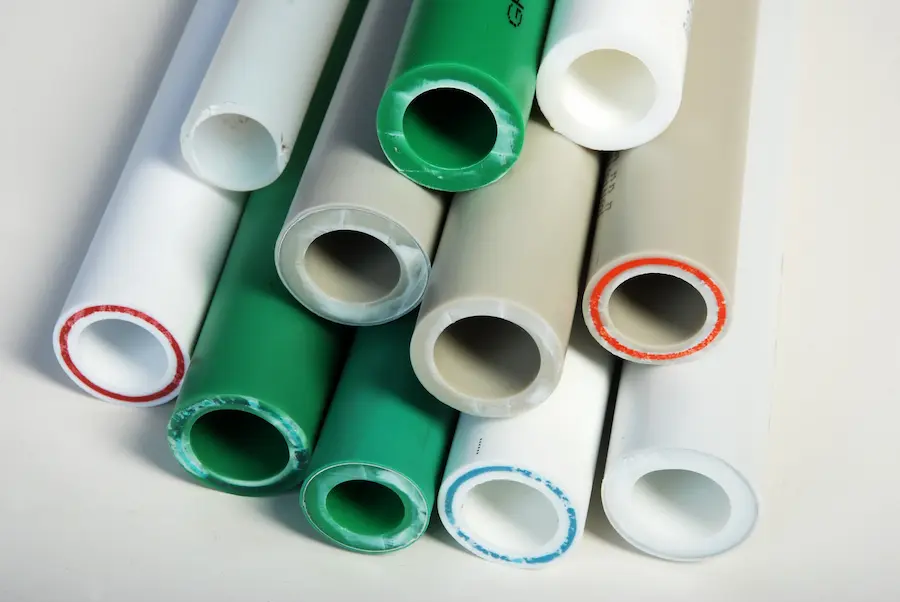When it comes to home insulation, most people only think about the walls, floors, and ceiling.
But did you know that pipes in your home also need insulation?
Pipe insulation is an often overlooked but essential aspect of home insulation that can help you save money on energy bills and prevent damage caused by freezing temperatures. Taking the time to insulate your pipes properly can also increase the lifespan of your plumbing system. This step-by-step guide will walk you through the pipe insulation process.
We will cover everything from choosing the right insulation material to installing it correctly to ensure maximum benefits. So, whether you are a DIY enthusiast or a homeowner looking to save money on energy bills, this guide is for you!
Table of Contents
The correct steps for pipe insulation installation
Measure the length and diameter
The first step in properly installing pipe insulation is to measure the length and diameter of the pipes accurately. This ensures that the insulation material is cut to the right size, fitting snugly around the pipes without any gaps. Taking accurate measurements will enable the insulation material to prevent heat transfer and reduce energy loss effectively.
Check For any Damages
Next, prepare the insulation material by checking for any damages or defects. It is important to ensure the material is free from tears, cuts, or punctures that may compromise its insulation properties. If any defects are found, it is best to replace the insulation material to maintain its effectiveness.
Remove Dirt
Before applying the insulation, clean the pipes thoroughly to remove any dirt, grease, or debris. A clean surface improves the adhesion of the insulation material to the pipes and prevents any issues with the installation. A damp cloth or a brush with mild soap and water is sufficient for cleaning most pipes.
Get Help From Professionals
When applying the insulation material, choosing the appropriate type for the specific application is essential. Various insulation materials are available, such as fiberglass, foam, and rubber. Each material has advantages and suitability, depending on factors like temperature range, moisture resistance, and fire safety. Consulting with a professional to determine the best insulation material for your needs is highly advisable.
Don’t forget to check The Leakage
Once the insulation material is cut to size, it should be wrapped tightly around the pipes. Ensure the insulation overlaps and seals properly to prevent gaps or air leakage. The joints and seams of the insulation should be securely taped or fastened to maintain its integrity over time. The tight and secure pipe insulation installation is vital for optimal performance and longevity.
Pay attention to any fittings
Additionally, paying attention to any pipe fittings, valves, or bends is important. These areas may require specialized insulation solutions such as flexible or pre-formed insulation. By properly insulating these specific areas, heat transfer, condensation, and freezing can be prevented, ensuring the overall effectiveness of the insulation system.
Regular Maintenance Is Necessary
Finally, regular maintenance and inspection of the installed pipe insulation are vital to ensure its continued performance. Over time, insulation materials may degrade, become damaged, or require replacement. Regularly monitoring the condition of the insulation and promptly addressing any issues will help maintain its effectiveness in energy efficiency and prevent potential problems in the plumbing system.
Importance of pipe insulation
Understanding the importance of pipe insulation is crucial for any homeowner or business owner. Pipes are an integral part of any plumbing or HVAC system, and their proper insulation plays a significant role in maintaining efficiency, preventing energy loss, and avoiding potential damage.
- One of the primary benefits of pipe insulation is energy conservation. Uninsulated pipes can lead to significant heat loss, especially in extreme temperatures. This means that the water or fluid flowing through the pipes may lose heat before it reaches its intended destination, requiring more energy to maintain the desired temperature. Insulating the pipes can reduce heat loss, increasing energy efficiency and lowering utility bills.
- Another essential aspect is preventing condensation. Cold pipes in warm environments can cause condensation to form on their surfaces. This moisture buildup can lead to
- various issues, including corrosion, mold growth, and damage to surrounding materials. Pipe insulation acts as a barrier, preventing the formation of condensation and protecting your pipes from potential damage.
- Insulating pipes also help maintain consistent water temperatures. Whether dealing with hot water or chilled fluids, insulation helps retain the desired temperature throughout the distribution system. This is particularly important in commercial settings where consistent water temperatures are crucial for various processes.
- Furthermore, pipe insulation provides acoustic benefits. Certain pipes, especially those carrying water or other fluids at high pressure, can generate significant noise. Insulating these pipes helps to dampen the sound, creating a quieter and more comfortable environment.
- Lastly, pipe insulation serves as a safety measure. Hot pipes can pose a burn risk, especially in areas accessible to children or unaware individuals. Properly insulating these pipes can reduce the surface temperature and minimize the risk of accidental burns.
Conclusion
In conclusion, properly installing pipe insulation is crucial for obtaining its full benefits. By accurately measuring and cutting the insulation material, preparing the surface, using the appropriate insulation type, securely applying the insulation, and carrying out regular maintenance, one can experience reduced energy loss, protection against freezing, noise reduction, increased system efficiency, and enhanced comfort. Following these steps will ensure that pipe insulation functions optimally, improving the energy efficiency and longevity of the plumbing system.

